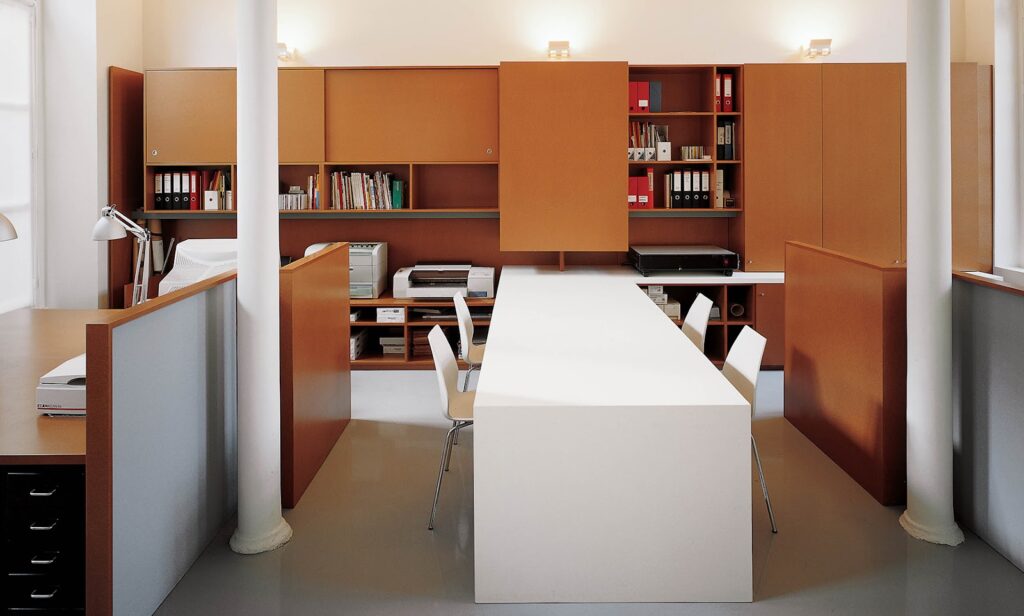Attoma: draw me a design agency

A subjective chronicle of a practice in transformation
This is a risky move: to tell the story of twenty-five years of a design agency, Attoma, in just a few paragraphs. Not a showcase of award-winning projects – quite a lot, actually! – nor a catalogue of neatly packaged business cases, but rather a first-person narrative, illustrated by a few “exhibits” from our archives.
Design as an Investigative Approach
Between 1997 and 2022, I led Attoma – rebranded as Assist Digital France in 2019 – adopting more the stance of an anthropologist than that of an entrepreneur. The adventure was both the management of a service company and an ongoing inquiry into design as a tool for understanding and acting. At Attoma, design was not just a problem-solving method; it was, above all, a way of asking questions, observing the world, and revealing the frictions between uses, territories, and systems – before responding with tangible solutions.
The first offices of Attoma, on Rue Charlot in Paris.
The same quest for rigor, whatever the scale
My very first client, even before Attoma’s official creation, was Banque de Luxembourg. Exploring data, typographic structures, and the cognitive pathways of reading complex financial statements was my initiation into information design: discreet but functionally vital design, crucial in building trust between the bank and its clients. That is how I discovered information design, the discipline that went on to structure my practice.
A few years later, things took a radical turn: RATP – the Paris public transport operator – launched a call to shortlist design agencies. In France at the time, few people even knew what “information design” meant. But thanks to the intuition of a visionary client – Yo Kaminagai, then Design Manager at RATP – and the rigor of our proposal, we earned one of the few places in this selective framework contract.
Our first project: designing touch-screen interfaces for the Navigo Ticket Vending Machines. It was 2001, years before the iPhone (2007) or the iPad (2009). The challenge was immense: creating an interface that was intuitive, reliable, and accessible — and robust enough to handle the staggering flows of daily commuters. A striking leap in scale: from the hushed offices of an investment bank to the crowded, stressful platforms of the Paris metro.
We forged our own approach to user-centered design, inspired by international best practices but adapted on the fly to the project context. The result was spectacular: several awards won, immediate recognition, and – surprisingly – an interface still in service more than twenty years later, a rare feat in the age of planned obsolescence.
This project gave Attoma decisive visibility, anchored the agency in the field of mobility, and opened the door to the industrial sector. Major collaborations followed with SNCF, Thales, Orange, and Schneider Electric. Within a few years, we had moved from a niche in information design to a reference in strategic design.
The interface of the RATP Navigo pass Ticket Vending Machine.
Mobility, the perfect metaphor for Service design
The mobility sector proved to be an ideal testing ground: accessibility requirements, massive flows, technical constraints, and social transformations. From RATP to SNCF, Keolis, Transdev, and later Île-de-France Mobilités, we refined a distinctive stance, combining methodological rigor with field culture. It came into its own with the Schéma Directeur des Services for the Grand Paris Express stations: an ambitious assignment that was less about “responding to a request” than about inventing a strategic framework for a future mobility experience.
Through this project, we helped structure the service dimension of the promise carried by SGP (originally Société du Grand Paris, today Société des Grands Projets): that of a new metropolitan mobility experience. The deliverable – a richly illustrated 150-page guidelines book – became a manifesto widely circulated within the design community. It shaped a distinctive user-centered stewardship approach – a concept known in France as “maîtrise d’usage” – later adopted by other agencies and, thanks to the advocacy of the DITP (French Interministerial Directorate for Public Transformation), now embedded in many public tenders.
Panel from the Service Master Plan for Grand Paris Express stations.
Design, a philosophy more than a profession
Fast forward to 2025. One observation stands out: service design tools have become commonplace. The real difference no longer lies in methods. The true challenge is philosophical: to invent a new way of thinking about value – not as a delivered functionality, but as a relationship built between people, timescales, and environments.
The design journey I’ve been shaping over the years, alongside dozens of remarkable talents, resembles a quest more than a method. It is not just about solving problems, but about questioning their very nature – and sometimes reframing them entirely, by redrawing the narrative and the promise.
What about tomorrow?
Today, outside the quite peculiar bubble that has formed around public policy design, independent agencies no longer exist in France. Assist Digital’s failure to integrate Attoma’s legacy into its French ambitions is just one episode among many: the disappearance of a whole generation of brilliant but economically fragile idea labs. Paradoxically, there have never been so many professionals calling themselves designers, even as design expertise seems to have vanished from the table where strategic decisions are made.
But not everything is “designops”, the factory of digital capitalism. Understanding daily life real uses with their emotional toll; questioning the very purpose of a service or a product; quickly sketching alternative scenarios to mitigate the risks of choices too often dictated by tech hype and opaque corporate decisions: this remains the strategic value of design. These needs are still there – and perhaps more urgent than ever.
It is up to us, practitioners of yesterday and today, to invent new models of collaboration to meet them. The future of design, in truth, is only just beginning!